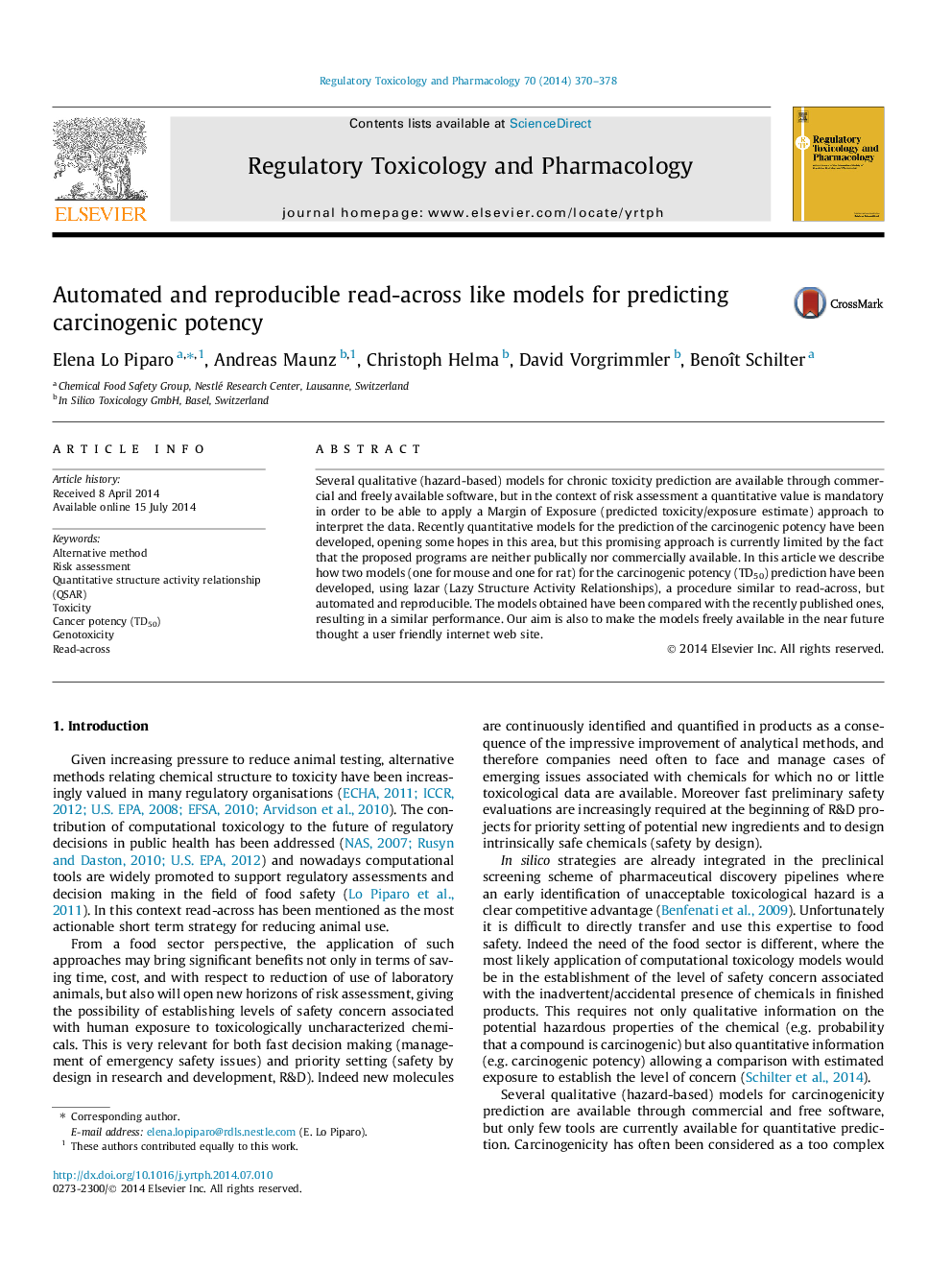| Article ID | Journal | Published Year | Pages | File Type |
|---|---|---|---|---|
| 5856920 | Regulatory Toxicology and Pharmacology | 2014 | 9 Pages |
Abstract
Several qualitative (hazard-based) models for chronic toxicity prediction are available through commercial and freely available software, but in the context of risk assessment a quantitative value is mandatory in order to be able to apply a Margin of Exposure (predicted toxicity/exposure estimate) approach to interpret the data. Recently quantitative models for the prediction of the carcinogenic potency have been developed, opening some hopes in this area, but this promising approach is currently limited by the fact that the proposed programs are neither publically nor commercially available. In this article we describe how two models (one for mouse and one for rat) for the carcinogenic potency (TD50) prediction have been developed, using lazar (Lazy Structure Activity Relationships), a procedure similar to read-across, but automated and reproducible. The models obtained have been compared with the recently published ones, resulting in a similar performance. Our aim is also to make the models freely available in the near future thought a user friendly internet web site.
Keywords
Related Topics
Life Sciences
Environmental Science
Health, Toxicology and Mutagenesis
Authors
Elena Lo Piparo, Andreas Maunz, Christoph Helma, David Vorgrimmler, Benoît Schilter,
